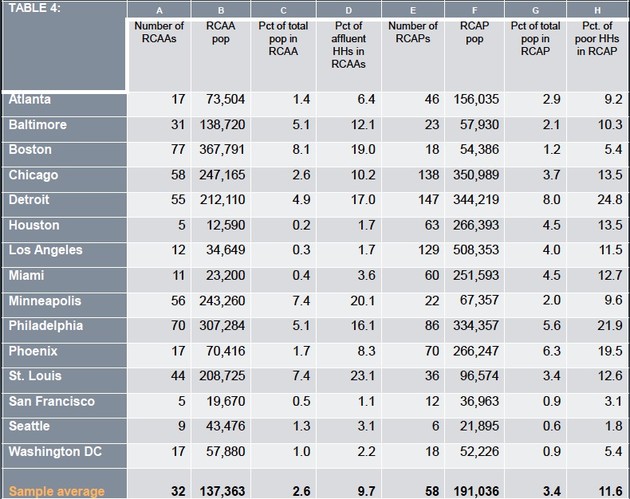Tuesday, October 27, 2015
why you didn't see it coming...,
By
CNu
at
October 27, 2015
0
comments
![]()
Labels: quorum sensing? , subrealist oeuvre...
Tuesday, October 06, 2015
cali overseers been putting in work, but with 40 million of y'all, it's just a drop in the bucket...,
By
CNu
at
October 06, 2015
0
comments
![]()
Labels: musical chairs , quorum sensing? , Rule of Law
Friday, September 25, 2015
sounds like sympathy, feels like fear, will act like self interest...
By
CNu
at
September 25, 2015
0
comments
![]()
Labels: killer-ape , musical chairs , quorum sensing?
kansas city becomes 6th regional fed survey flashing red
 |
| regional Fed survey collapse goes on... Dallas, Richmond, New York, Philly, Chicago, and now Kansas City... |
By
CNu
at
September 25, 2015
0
comments
![]()
Labels: contraction , quorum sensing? , weather report
Tuesday, September 08, 2015
importance of mechanisms for the evolution of cooperation
By
CNu
at
September 08, 2015
0
comments
![]()
Labels: Childhood's End , ethology , individual vs. collective , quorum sensing?
Monday, August 24, 2015
people speak on their support for mr. miracle
By
CNu
at
August 24, 2015
0
comments
![]()
Labels: quorum sensing? , scott free , What IT DO Shawty...
Friday, August 21, 2015
the first and most essential step in the transformation of any society is delegitimization of the existing order...,
It’s probably necessary to say at the outset that the arguments I propose to make here have nothing to do with the ethics of violence, and everything to do with its pragmatics as a means of bringing about social change. Ethics in general are a complete quagmire in today’s society. Nietzsche’s sly description of moral philosophy as the art of propping up inherited prejudices with bad logic has lost none of its force since he wrote it, and since his time we’ve also witnessed the rise of professional ethicists, whose jobs consist of coming up with plausible excuses for whatever their corporate masters want to do this week. The ethical issues surrounding violence are at least as confused as those around any of the other messy realities of human life, and in some ways, more so than most.
Myself, I consider violence enitrely appropriate in some situations. Many of my readers may have heard, for example, of an event that took place a little while back in Kentucky, where a sex worker was attacked by a serial killer. While he was strangling her, she managed to get hold of his handgun, and proceeded to shoot him dead. To my mind, her action was morally justified. Once he attacked her, no matter what she did, somebody was going to die, and killing him not only turned the violence back on its originator, it also saved the lives of however many other women the guy might have killed before the police got to him—if they ever did; crimes against sex workers, and for that matter crimes against women, are tacitly ignored by a fairly large number of US police departments these days.
Along the same lines, a case can be made that revolutionary violence against a political and economic system is morally justified if the harm being done by that system is extreme enough. That’s not a debate I’m interested in exploring here, though. Again, it’s not ethics but pragmatics that I want to discuss, because whether or not revolutionary violence is justified in some abstract moral sense is far less important right now than whether it’s an effective response to the situation we’re in. That’s not a question being asked, much less answered, by the people who are encouraging environmental and climate change activists to consider violence against the system. ....
.....The first and most essential step in the transformation of any society is the delegitimization of the existing order. That doesn’t involve violence, and in fact violence at this first stage of the process is catastrophically counterproductive—a lesson, by the way, that the US military has never been able to learn, which is why its attempts to delegitimize its enemies (usually phrased in such language as “winning minds and hearts”) have always been so embarrassingly inept and ineffective. The struggle to delegitimize the existing order has to be fought on cultural, intellectual, and ideological battlefields, not physical ones, and its targets are not people or institutions but the aura of legitimacy and inevitability that surrounds any established political and economic order.
Those of my readers who want to know how that’s done might want to read up on the cultural and intellectual life of France in the decades before the Revolution. It’s a useful example, not least because the people who wanted to bring down the French monarchy came from almost exactly the same social background as today’s green radicals: disaffected middle-class intellectuals with few resources other than raw wit and erudition. That turned out to be enough, as they subjected the monarchy—and even more critically, the institutions and values that supported it—to sustained and precise attack from constantly shifting positions, engaging in savage mockery one day and earnest pleas for reform the next, exploiting every weakness and scandal for maximum effect. By the time the crisis finally arrived in 1789, the monarchy had been so completely defeated on the battlefield of public opinion that next to nobody rallied to its defense until after the Revolution was a fait accompli.
By
CNu
at
August 21, 2015
0
comments
![]()
Labels: micro-insurgencies , quorum sensing? , The Hardline , work
Tuesday, August 18, 2015
Buzz - a programming language for self-organizing heterogenous robot swarms

arXiv | We present Buzz, a novel programming language for heterogeneous robot swarms. Buzz advocates a compositional approach, offering primitives to define swarm behaviors both from the perspective of the single robot and of the overall swarm. Single-robot primitives include robot-specific instructions and manipulation of neighborhood data. Swarm-based primitives allow for the dynamic management of robot teams, and for sharing information globally across the swarm. Self-organization stems from the completely decentralized mechanisms upon which the Buzz run-time platform is based. The language can be extended to add new primitives (thus supporting heterogeneous robot swarms), and its run-time platform is designed to be laid on top of other frameworks, such as Robot Operating System. We showcase the capabilities of Buzz by providing code examples, and analyze scalability and robustness of the run-time platform through realistic simulated experiments with representative swarm algorithms.
By
Dale Asberry
at
August 18, 2015
0
comments
![]()
Labels: quorum sensing? , stigmergy , tactical evolution
Evolution of Self-Organized Task Specialization in Robot Swarms
Many biological systems execute tasks by dividing them into finer sub-tasks first. This is seen for example in the advanced division of labor of social insects like ants, bees or termites. One of the unsolved mysteries in biology is how a blind process of Darwinian selection could have led to such highly complex forms of sociality. To answer this question, we used simulated teams of robots and artificially evolved them to achieve maximum performance in a foraging task. We find that, as in social insects, this favored controllers that caused the robots to display a self-organized division of labor in which the different robots automatically specialized into carrying out different subtasks in the group. Remarkably, such a division of labor could be achieved even if the robots were not told beforehand how the global task of retrieving items back to their base could best be divided into smaller subtasks. This is the first time that a self-organized division of labor mechanism could be evolved entirely de-novo. In addition, these findings shed significant new light on the question of how natural systems managed to evolve complex sociality and division of labor.
By
CNu
at
August 18, 2015
0
comments
![]()
Labels: evolution , intelligence , quorum sensing? , What IT DO Shawty...
Tuesday, August 11, 2015
what trump supporters are really thinking in their own words...,
By
CNu
at
August 11, 2015
0
comments
![]()
Labels: American Original , political theatre , quorum sensing? , What IT DO Shawty...
Tuesday, April 14, 2015
where the white people live...,
By
CNu
at
April 14, 2015
0
comments
![]()
Labels: American Original , play-at-your-level , quorum sensing? , Race and Ethnicity , What IT DO Shawty...
Sunday, February 01, 2015
the military understands that civilization, even the most rigid is only six missed primary meals thick...,
By
CNu
at
February 01, 2015
0
comments
![]()
Labels: quorum sensing? , tactical evolution , weather report , What Now?
Saturday, January 31, 2015
you and I are the past c'est la vie, much respect girl - but now you're my ex-girl & I'm out with the next girl...,
By
CNu
at
January 31, 2015
0
comments
![]()
Labels: identity politics , quorum sensing? , reality casualties , relationship management
Thursday, January 29, 2015
add that goo-gol aggregate intelligence isht and big-A hives appear to trump little dog packs...,
By
CNu
at
January 29, 2015
5
comments
![]()
Labels: quorum sensing? , tactical evolution , What Now?
Tuesday, January 06, 2015
does believing overseers are constantly under fire serve a productive function for society?
Policing has been getting safer for 20 years. In terms of raw number of deaths, 2013 was the safest year for cops since World War II. If we look at the rate of deaths, 2013 was the safest year for police in well over a century .... You’re more likely to be murdered simply by living in about half of the largest cities in America than you are while working as a police officer.
By
CNu
at
January 06, 2015
0
comments
![]()
Labels: Kwestin , quorum sensing? , you used to be the man
Saturday, December 06, 2014
civil rights 2.0: the war on 99% liberties by 1% authoritarianism
By
CNu
at
December 06, 2014
0
comments
![]()
Labels: American Original , quorum sensing? , tactical evolution , What Now?
Tuesday, December 02, 2014
ok yankee, stick em up! (damn it's hard to find cowboy movie stick-up clips)
an attempt to stick up a local bank
[spoken] Thesaurus entry for this meaning of stick up
stick 'em up spoken if someone with a gun tells you to stick 'em up, they are ordering you to raise your arms above your head, usually because they are going to steal money or goods from you
By
CNu
at
December 02, 2014
0
comments
![]()
Labels: gestalt , Living Memory , quorum sensing?
thai's give the three-finger salute to their gun-wielding stick-up kids in uniform...,
By
CNu
at
December 02, 2014
0
comments
![]()
Labels: gestalt , micro-insurgencies , quorum sensing?
where oh where is dieudonné?
By professional athletes
By
CNu
at
December 02, 2014
0
comments
![]()
Labels: micro-insurgencies , quorum sensing?
Sheryl Sandberg Lies, The NYTimes Lies, None Of This Shit Happened....,
Billionaire Zionist @sherylsandberg is confronted with a @TheGrayzoneNews takedown of the report she cites to bolster the narrative of her...

-
theatlantic | The Ku Klux Klan, Ronald Reagan, and, for most of its history, the NRA all worked to control guns. The Founding Fathers...
-
Video - John Marco Allegro in an interview with Van Kooten & De Bie. TSMATC | Describing the growth of the mushroom ( boletos), P...
-
Farmer Scrub | We've just completed one full year of weighing and recording everything we harvest from the yard. I've uploaded a s...


